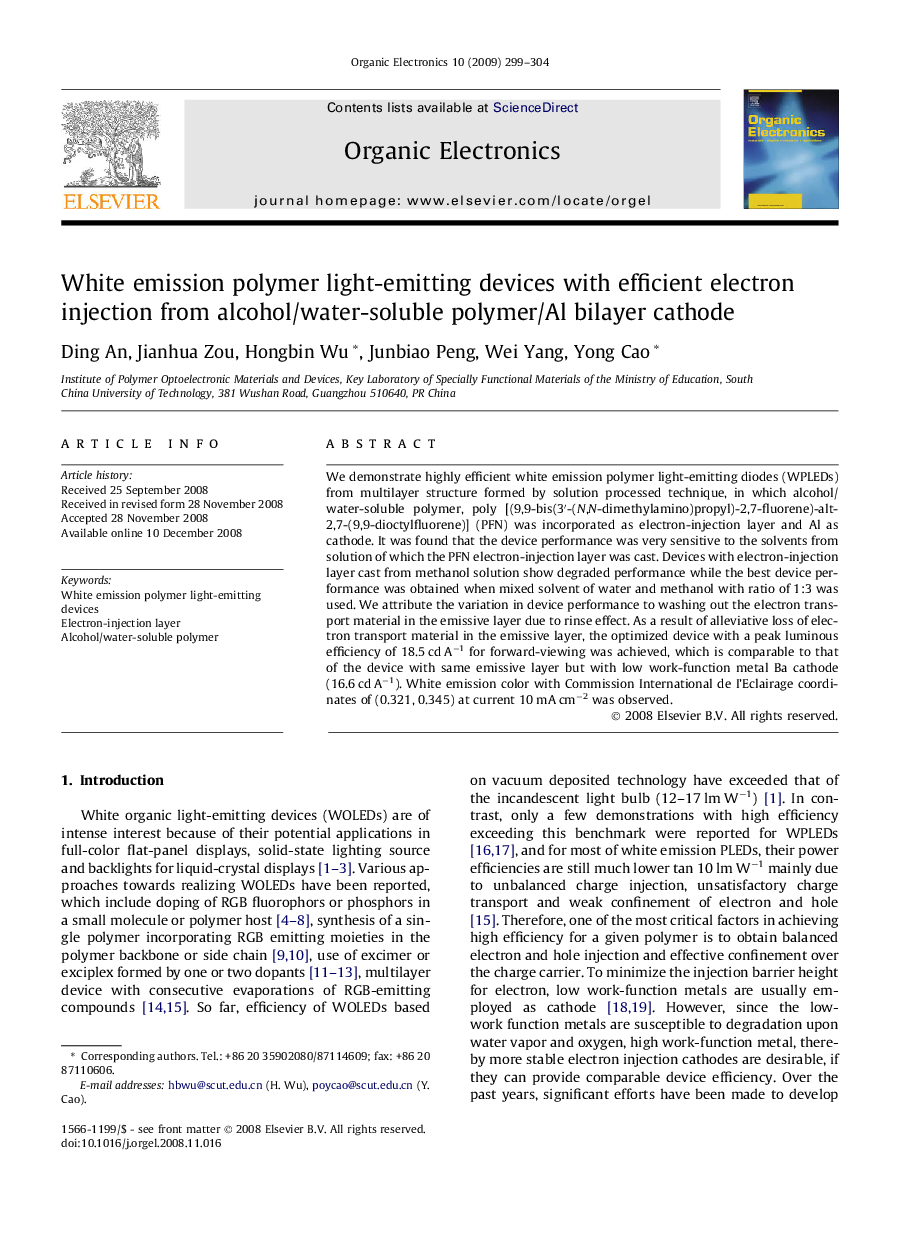| کد مقاله | کد نشریه | سال انتشار | مقاله انگلیسی | نسخه تمام متن |
|---|---|---|---|---|
| 1265189 | 972199 | 2009 | 6 صفحه PDF | دانلود رایگان |

We demonstrate highly efficient white emission polymer light-emitting diodes (WPLEDs) from multilayer structure formed by solution processed technique, in which alcohol/water-soluble polymer, poly [(9,9-bis(3′-(N,N-dimethylamino)propyl)-2,7-fluorene)-alt-2,7-(9,9-dioctylfluorene)] (PFN) was incorporated as electron-injection layer and Al as cathode. It was found that the device performance was very sensitive to the solvents from solution of which the PFN electron-injection layer was cast. Devices with electron-injection layer cast from methanol solution show degraded performance while the best device performance was obtained when mixed solvent of water and methanol with ratio of 1:3 was used. We attribute the variation in device performance to washing out the electron transport material in the emissive layer due to rinse effect. As a result of alleviative loss of electron transport material in the emissive layer, the optimized device with a peak luminous efficiency of 18.5 cd A−1 for forward-viewing was achieved, which is comparable to that of the device with same emissive layer but with low work-function metal Ba cathode (16.6 cd A−1). White emission color with Commission International de I’Eclairage coordinates of (0.321, 0.345) at current 10 mA cm−2 was observed.
Journal: Organic Electronics - Volume 10, Issue 2, April 2009, Pages 299–304